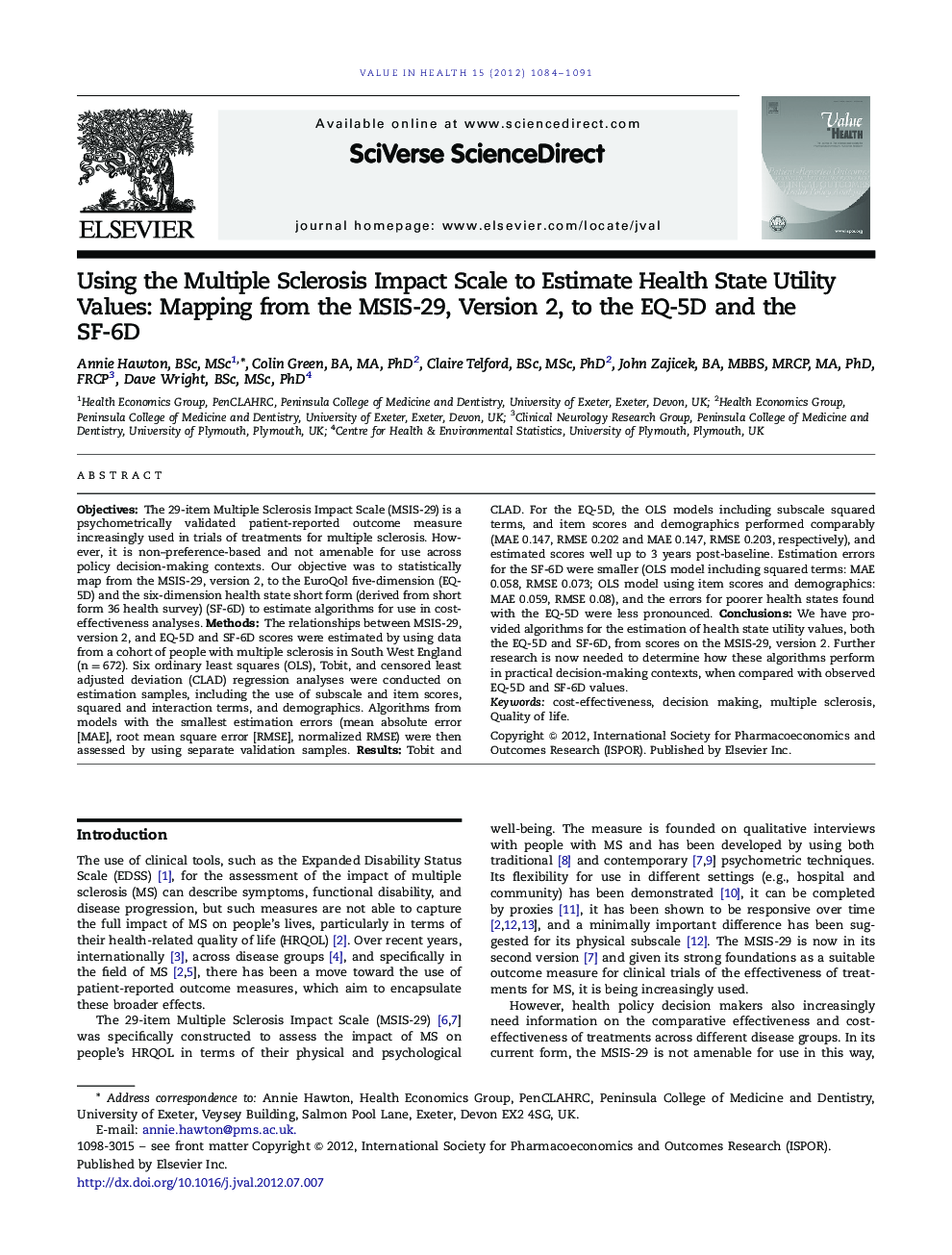| کد مقاله | کد نشریه | سال انتشار | مقاله انگلیسی | نسخه تمام متن |
|---|---|---|---|---|
| 987703 | 935160 | 2012 | 8 صفحه PDF | دانلود رایگان |
ObjectivesThe 29-item Multiple Sclerosis Impact Scale (MSIS-29) is a psychometrically validated patient-reported outcome measure increasingly used in trials of treatments for multiple sclerosis. However, it is non–preference-based and not amenable for use across policy decision-making contexts. Our objective was to statistically map from the MSIS-29, version 2, to the EuroQol five-dimension (EQ-5D) and the six-dimension health state short form (derived from short form 36 health survey) (SF-6D) to estimate algorithms for use in cost-effectiveness analyses.MethodsThe relationships between MSIS-29, version 2, and EQ-5D and SF-6D scores were estimated by using data from a cohort of people with multiple sclerosis in South West England (n=672). Six ordinary least squares (OLS), Tobit, and censored least adjusted deviation (CLAD) regression analyses were conducted on estimation samples, including the use of subscale and item scores, squared and interaction terms, and demographics. Algorithms from models with the smallest estimation errors (mean absolute error [MAE], root mean square error [RMSE], normalized RMSE) were then assessed by using separate validation samples.ResultsTobit and CLAD. For the EQ-5D, the OLS models including subscale squared terms, and item scores and demographics performed comparably (MAE 0.147, RMSE 0.202 and MAE 0.147, RMSE 0.203, respectively), and estimated scores well up to 3 years post-baseline. Estimation errors for the SF-6D were smaller (OLS model including squared terms: MAE 0.058, RMSE 0.073; OLS model using item scores and demographics: MAE 0.059, RMSE 0.08), and the errors for poorer health states found with the EQ-5D were less pronounced.ConclusionsWe have provided algorithms for the estimation of health state utility values, both the EQ-5D and SF-6D, from scores on the MSIS-29, version 2. Further research is now needed to determine how these algorithms perform in practical decision-making contexts, when compared with observed EQ-5D and SF-6D values.
Journal: Value in Health - Volume 15, Issue 8, December 2012, Pages 1084–1091
